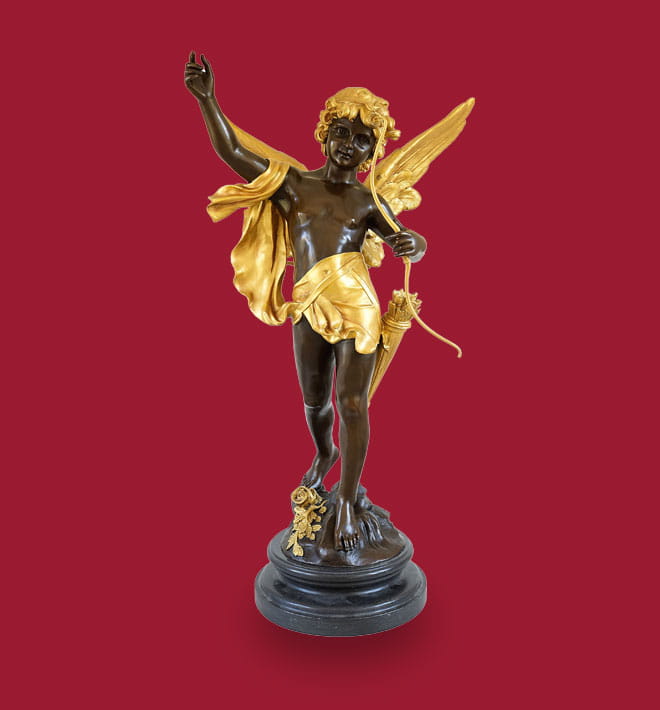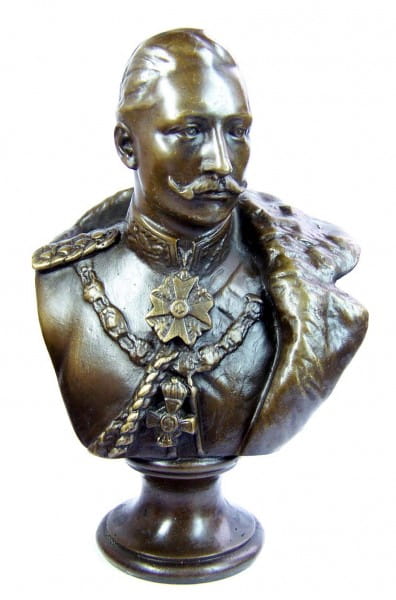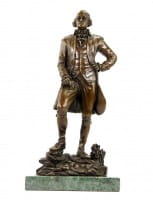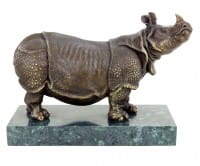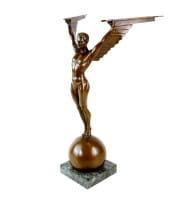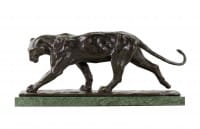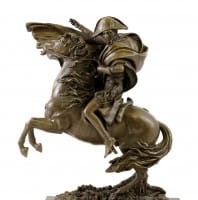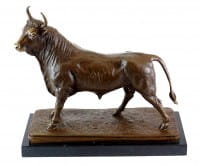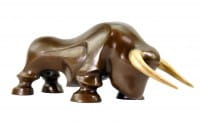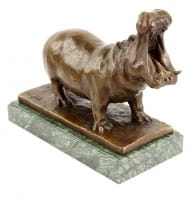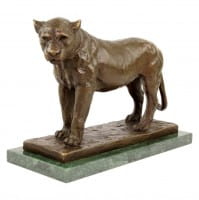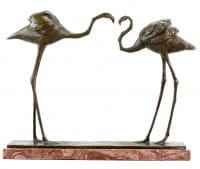Prices incl. VAT, free shipping worldwide
Ready to ship today,
Delivery time appr. 3-6 workdays










Product description
"Kaiser William II. - German Emperor - Bronze bust signed"
| Weight | 1,2 kg |
Kaiser Wilhelm II – German Emperor Bronze Bust – A Monument to the Last German Emperor
This remarkable bronze bust of Kaiser Wilhelm II captures the commanding presence of Germany’s last emperor. With a powerful gaze and finely detailed military attire, this bust serves as a tribute to a controversial yet historically significant leader who shaped the German Empire’s final years. Signed by the artist, this piece embodies both artistic excellence and historical resonance, presenting Wilhelm II in his characteristic regalia and capturing the complexity of his reign and personality.
The Artist’s Craftsmanship and Inspiration
The artist behind this bronze bust has rendered Wilhelm II’s likeness with remarkable skill, creating a piece that resonates with the grandeur of the era. Although specific details about the artist’s life may not be widely documented, their work reveals an expertise in bronze sculpture and a mastery of historical portraiture. The artist’s careful attention to detail, from the folds of Wilhelm’s uniform to the expression on his face, reflects a profound understanding of both technique and historical symbolism.
Kaiser Wilhelm II: A Brief Biography
Wilhelm II was born on January 27, 1859, in Berlin, Germany, as Friedrich Wilhelm Viktor Albert of Prussia. He was the eldest grandchild of Queen Victoria of England, tying him to both the German and British royal families. Wilhelm ascended to the German throne in 1888, a year known as the "Year of Three Emperors," following the death of his father, Frederick III, and grandfather, Wilhelm I. As Emperor of Germany and King of Prussia, Wilhelm II ruled from 1888 until his abdication in 1918, marking the end of the German Empire and the monarchy.
The Historical Significance of Wilhelm II’s Reign
Wilhelm II’s reign was marked by his ambitious efforts to transform Germany into a global power. He expanded the German navy, pursued colonial interests, and sought to secure Germany's place as a dominant European force. However, his aggressive foreign policies and often erratic diplomatic decisions contributed to escalating tensions with other nations, ultimately playing a role in the onset of World War I. His abdication in 1918, following Germany’s defeat, marked the end of the German monarchy and his retreat into exile in the Netherlands.
The Creation of the Bust – Historical Context and Craftsmanship
This bust of Kaiser Wilhelm II likely dates to the early 20th century, possibly crafted during or shortly after his reign. The detailed depiction of his uniform and military decorations reflects a period when leaders were often memorialized through portrait busts, which served as symbols of power and prestige. The artist’s choice to depict Wilhelm in his military attire, complete with medals and insignia, reinforces his imperial role and his vision of Germany as a leading power.
The bust is finely cast in bronze, a material traditionally used for its durability and historical weight, adding a sense of permanence and gravitas to the sculpture. By using bronze, the artist ensured that Wilhelm’s image would endure through time, much like the emperor’s complex legacy.
Details and Symbolism in the Bust
Military Decorations and Uniform: The artist has meticulously depicted Wilhelm II’s military attire, symbolizing his deep association with Germany’s armed forces and his focus on strengthening Germany’s military might. The decorations represent his connection to Prussian heritage and the power he wielded as a monarch.
Authoritative Expression: Wilhelm’s facial expression, stern and reflective, captures the duality of his character—a leader who was both ambitious and divisive. His gaze embodies both strength and contemplation, perhaps hinting at the burdens of leadership and the weight of his decisions.
Artistic Detailing: The sculpture’s attention to detail, from the carefully sculpted mustache to the folds of Wilhelm’s cloak, underscores the artist’s dedication to authenticity and realism. These elements contribute to the sculpture’s historical and aesthetic value.
Wilhelm II’s Lasting Legacy
Kaiser Wilhelm II’s legacy remains complex and often debated. While some view him as a champion of German nationalism and a visionary leader, others criticize his impulsive and aggressive policies, which led Germany into global conflict. After World War I, he lived in exile in the Netherlands until his death in 1941, never returning to Germany. Despite his polarizing actions, Wilhelm II’s life and reign continue to fascinate historians, symbolizing the end of an era and the dawn of modern Europe.
Result: An Enduring Memorial to a Controversial Leader
This bronze bust of Kaiser Wilhelm II stands as both an artistic achievement and a historical artifact. It immortalizes the last German Emperor’s likeness, preserving his image for future generations. For collectors and history enthusiasts, this bust offers not only a tangible connection to the German Empire’s final chapter but also a reflection on the complexities of leadership, power, and legacy. With its fine craftsmanship and rich historical significance, this piece is a compelling tribute to one of the most intriguing figures of European history.
Width: 11 cm
Height: 17 cm
Depth: 8 cm
Weight: 1,2 kg
100% Bronze
Our advantages
free shipping
Worldwide free shipping
14 days money back
You can cancel your order
within 14 days
secure payment services
Paypal, Master Card, Visa, American Express and more

